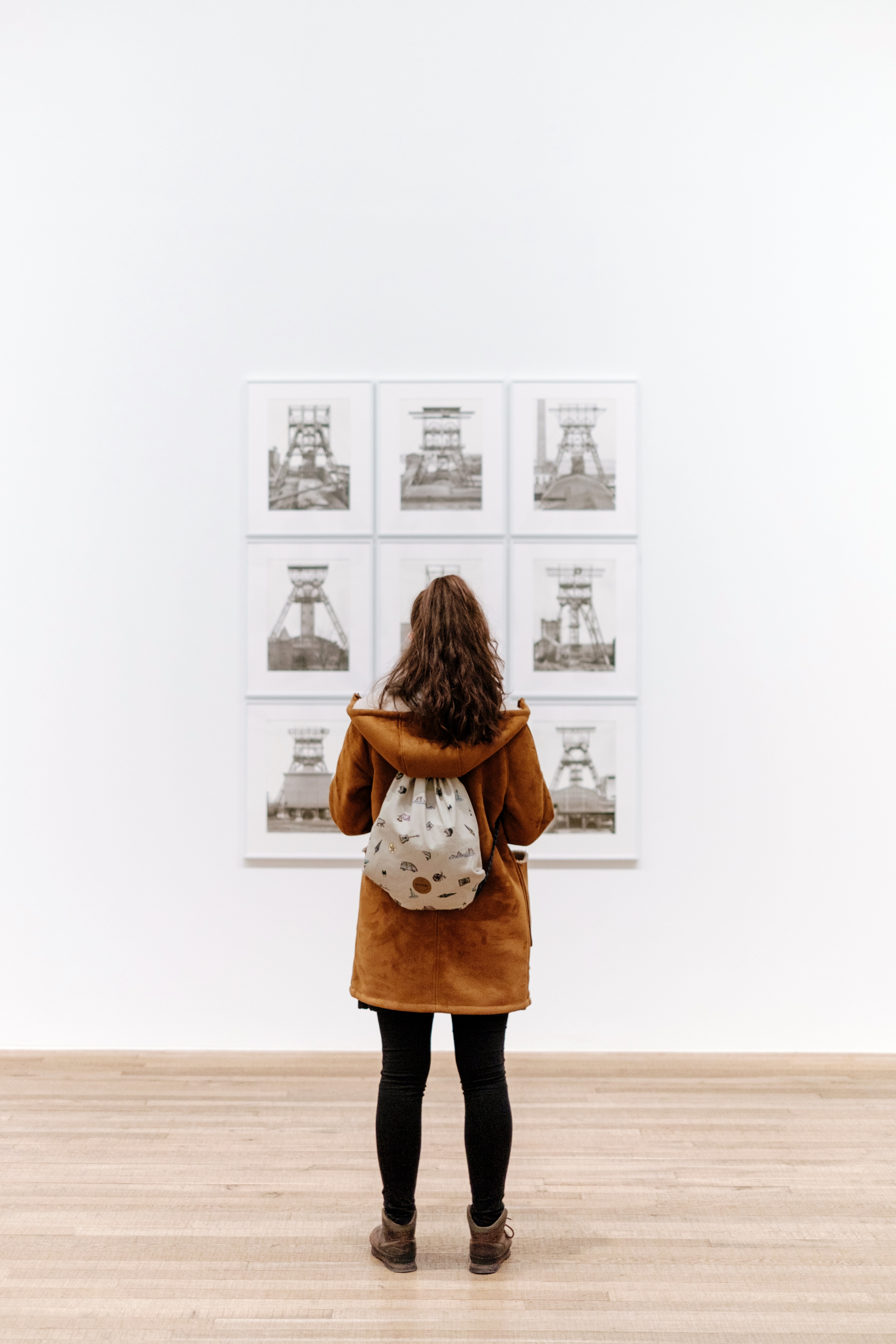The Ins & Outs of Choosing a Venue for Your Art Show
Online? You can show your art almost anywhere. Showing them offline...not so much.
You’re going to have to be a lot more selective.
In essence, you’re going to play matchmaker.
Is your art going to mesh with the venue?
Like dating, there’s a whole lot more that goes into it than “they look so cute together” — money points, logistics, etc.
Here’s what you need to keep your eye out for.
Where Can You Even Have An Art Show?
For most people when they think art show, they think of a gallery or an art fair. And those are completely valid and legitimate venues to hold your art show.
Problem is...not everybody can get into a gallery or art fair—especially when you’re just starting out.
But there are venues out there that’ll allow you to display your art, and more importantly, sell your art no matter your experience.
Don’t be afraid to branch out to less conventional venues. The more experience you get showing your art, the more successful you’ll be once you finally get into the gallery of your dreams.
Possible places you can choose for your venue include:
- Galleries
- Art festivals
- Restaurants
- Art spaces
- Local coffee shops
- Public libraries
- Community centers
- Schools and universities
- Non-profits
- Corporations
- Open studios
- City hall or government buildings
- Auctions and benefits
- Public art programs
- Hotel lobbies
- Public parks
- Out the back of the trunk of your car
- Mom’s basement
Literally anywhere where there is space to put your art is fair game. (provided its safe and accessible) If budget is an issue, that’s just another opportunity to get even more creative.
Narrowing Down Your Choices
Demographics
Start with listing down all the potential venues in your area and identify the demographics. Different venues attract different crowds.
Do you think your art will resonate with a more independent community? Or would you rather position your brand to more high-end art buyers? I would suggest going to one of their events or snoop around the neighborhood so you get a feel for the vibe before deciding the right venue.
Money Points
To avoid taking a loss or getting ripped off, here are some points to consider:
- Do the prices of the venue match your prices? If it’s too high or too low, the venue might not accept your proposal because your works will seem a little out of place.
- What commission do they take if any?
- Galleries take around 50%. Consider how much you will make after deducting for not only your supplies, but renting the space, matting, framing, promotion, shipping, and most importantly, your time.
- Will you have to raise your prices? If so, how much? Until you’re established, you probably won’t be able to charge thousands. So if you have to raise your prices too high, you might want to consider a cafe or artist-run space where they take little to no commission.
- How do you get paid when a piece sells? This should be outlined before the exhibition. You don’t want to wait weeks or even months to receive your money because of this oversight.
- Do you have to pay to have your art shown?
- For a festival, this is a given as you will have to rent a space for your booth. It can expensive, but there will a lot of foot traffic of potential buyers. Do some research on the festival to see if your works fits in nicely.
- Do be careful of galleries charging you to have your art shown, however. They have less incentive to sell your art and having them on your resume may hurt your ability to get into other more reputable galleries. Some can be good opportunities so do your due diligence. Ask other artists that have shown there before whether or not they were treated fairly and would they do it again. Search for press about the gallery.
- Artist-run spaces do charge rent, but are much more affordable. They do require you to sit-in (meaning you’ll have to be there for the entirety), but it’s a great way to build up your CV. See if you can partner up with some other artists to split the cost + time.
- Who pays for insurance? There are two types of insurance:
- Public liability insurance should anything happen to the attendees
- Insurance for your works should there be an incident such as a fire, theft, or breakage
- Some artists opt not to have insurance, but it is a risk they take. If the venue doesn’t offer insurance, here are some questions you should ask yourself to see if you should buy your own:
- Who is going to watch over the artwork?
- How much foot traffic is there going to be? Everybody that walks past is a potential liability.
- How long is the show going to last?
- How much did you spend creating your artwork?
- Are you framing with glass?
- Some venues will have an expectation of some sort of exclusivity. What are the terms? Can you still sell on your own website? Will you have to drastically change your prices? It can be tempting to have your works shown, but if the galleries’ expectations seriously impedes on your business, don’t be afraid to walk away. There’ll always be more opportunities.
- Will the venue going to help you with promotion? Do they have a mailing list you can use?
- Don’t discount a venue just because they can’t help with promotion. It’s just something you should think about and budget for if not.
These considerations vary from venue to venue, so look around to see which venue would be more appropriate for you money-wise.
Logistics
These details may be small, but they can make a huge difference in the success of your show.
Here’s what you need to consider:
Parking
Are there ample parking spots? Is the venue accessible by public transportation?
Food/Drinks
Will the venue supply food and/or drinks? If not, what kind of food/drinks can you pull off (if any) that’s within your budget?
If you’re at a festival, will there be any booth watchers so you can sneak off and have something to eat?
Dates
What dates will the venue be open for an exhibition? Can you be ready by then?
Who installs/arranges the works?
Will the venue install/arrange it for you? Or do you get to decide how and where?
Transportation
How will you transport the artworks there?
Wall space
How much wall space will you be working with? Will there be anything else up on the walls during your exhibit?
The wall space determines how large your works can be and how many works you can display. Aim for a balance between the two.
Lighting
Good lighting can make or break the presentation.
How well lit is the venue? Some venues such as coffee shops or restaurants are lit for ambiance rather than art presentation and this could harm the experience. A good work around for this could be to bring your own lamps or lights to the venue.
Conclusion
Getting into prestigious institutions such as museums or commercial galleries is going to be difficult, but not impossible.
If you have your eyes set on these venues, stay alert with open calls for artists or up-to-date with how they select artists. Since most of them will not accept unsolicited proposals, getting your art into these venues will take some maneuvering.
Sometimes this means building relationships, sometimes this means building up your resume. Other times this means both.
Showing your art at other spaces can be a great way to achieve both. Non-profits, artist-run spaces, art fairs, restaurants, hotel lobbies, coffee shops, parking lots, even your own front yard are possible places to exhibit your art.
It just takes a bit of creativity.
Where have you shown your art? Let us know in the comments below.
Written by Emily May
Emily May Gunawan from Sally & Emily photography duo was born in Sydney and raised in Jakarta, positioning her and her sister Sally to engage with both Western and Eastern worlds. Since establishing her career in 2012, they have gone on to work with global brands including Adidas, Tim Tam, to NYLON Magazine in a wide range of capacities both for print and digital publications as photographers, creative directors, to videographers. Sally & Emily’s images are fuelled by self-discovery and contemporary femininity, taking inspirations from their diverse cultural heritage and personal stories. View their works at www.sallyemily.comand follow the journey at www.instagram.com/sally_emily
Recent Posts
-
Exclusive Picture Frame Clearance Event!
Dear Valued Customer, We hope this email finds you well. At Mat Board Center, we're excited to …Aug 09 2023 -
Elements of Art—Color
7 elements of art. Each an essential tool in your art arsenal. We’ll be diving deep into each ele …Mar 11 2020 -
How to Sell Art on Etsy: A Step-By-Step Guide to Setting Up Your Store
Getting started selling your art? Etsy is a great place to get your feet wet. It’s:Easy to get start …Sep 26 2019

